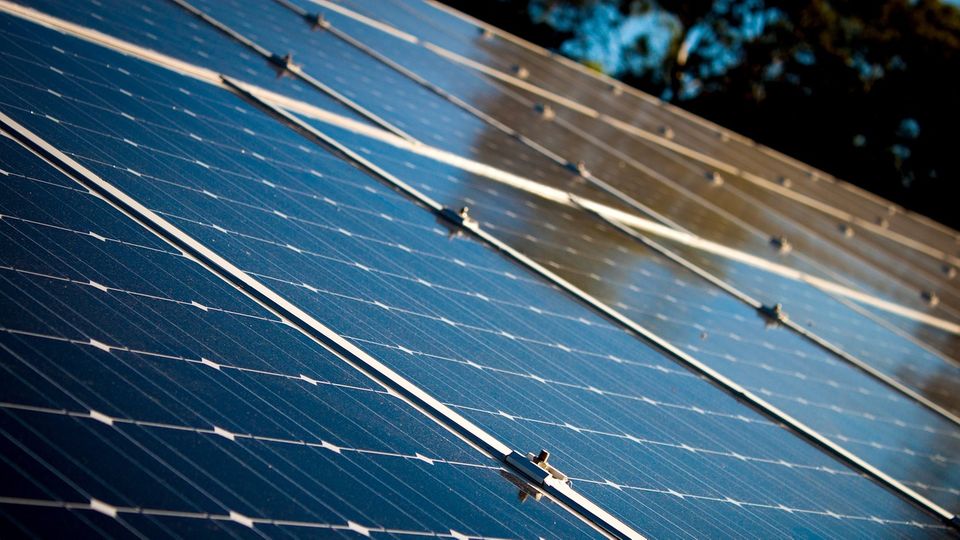With a balcony power plant, consumers can produce their own green electricity. So far, this has involved some bureaucracy. With the turn of the year it might get easier.
by Christina Keppel
Photovoltaic modules on the balcony, in the garden or in the garage supply the household with green electricity. They are easy to assemble and the purchase costs are manageable. It is not surprising that the small systems are so popular: According to a current evaluation of data from the Federal Network Agency by the data portal Statista, around 300,000 plug-in solar devices were installed nationwide in Germany in August 2023 – a good three times as many as in December of the previous year.
For many people it should be much faster in the future to put their balcony power plant into operation. In mid-August, the Federal Cabinet decided on a solar package, making plug-in solar devices a new category of solar systems in the Renewable Energy Sources Act (EEG). This should remove many bureaucratic hurdles for tenants and owners. This should help accelerate the expansion of solar energy in Germany. The regulation could come into force as early as the new year.
Interested parties must take note of this
A plug-in solar device consists of one or more photovoltaic modules and an integrated inverter that converts the solar power into household power. The system can be easily connected via a socket plug. The electricity produced can be used directly, thus reducing the energy bill.
In order for the balcony power plants to be safe, users must firmly mount the solar panels. In addition, they should buy the systems in German online shops or from the local electrician. Because even a device from a neighboring European country may not meet the legal requirements in Germany. Users also don’t have to worry about the electrics if they keep one thing in mind: “We advise you to only buy the device ready to plug in,” says Jörg Sutter, speaker for photovoltaics at the NRW consumer advice center. Offers that only contain loose cables without the corresponding plug-in devices in addition to solar panels and inverters should be avoided.
New kilns
Germany is phasing out nuclear power – in complete contrast to other countries
That will change with the new legislation
So far, tenants have had to obtain the consent of their landlords and owners from the apartment owners’ association (WEG) – before installation and commissioning, of course. That could go away with the new law. Registration is also becoming easier: consumers currently have to register their balcony power plant with the network operator – often the local municipal utility – and enter it in the Federal Network Agency’s market master data register (MaStR). If the new law comes as expected, there will be no need to register with the network operator from 2024.
In addition, the power limit of the inverters is to be increased to 800 watts instead of the current 600 watts – from 2024 the devices should therefore provide more electricity for the household than before. The ban on connecting plug-in solar devices to analogue electricity meters could also be lifted. These are particularly common in old houses and in the country. Then users would no longer have to wait for an electricity meter to be changed before installation.

For whom is a balcony power plant worthwhile?
Consumer advice centers recommend one or two standard solar panels with a maximum output of 400 watts per household. For a two-person household, they recommend a mini system with one module; two modules only make sense if the basic consumption is high. A plug-in solar device with a standard module costs between 350 and 600 euros, depending on the provider. A sales tax rate of zero percent has applied to plug-in solar devices since January 1, 2023.
How much energy a household can save with a balcony power plant depends on its location and household consumption. According to a sample calculation by the consumer advice centers, a balcony power plant with a 400-watt module can cover almost the base load of a two-person household under certain conditions on sunny days. For this purpose, the mini system should be mounted vertically, without shading, on a south-facing balcony, for example. In this example, the plug-in solar device supplies around 280 kilowatt hours of electricity per year.
However, balcony power plants do not store the energy generated – and there is no feed-in tariff for excess energy that flows into the grid. Therefore, the electricity consumption of a household is probably not reduced by the entire capacity of the system. In its calculation example, the consumer advice center assumes around 200 kilowatt hours by which the power consumption of a household can be reduced by a balcony power plant. With an electricity price of 35 cents per kilowatt hour of electricity, the annual savings would be around 70 euros. The acquisition costs would thus have been amortized after five to seven years.
Interested parties can easily calculate for themselves whether the balcony power plant is profitable for their own circumstances. The plug-in solar simulator from the Berlin University of Applied Sciences (HTW) determines how much electricity and money households can save individually with a plug-in solar device.
According to Sutter, however, the question of the viability of the mini-plant is not the main point for most people. Since the costs and effort for the systems are relatively low, other arguments usually prevail: “Many consumers are curious about the technology and want to contribute to the energy transition with a balcony power plant”.
This article was first published by our colleagues at CAPITAL
Source: Stern




